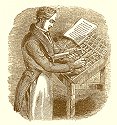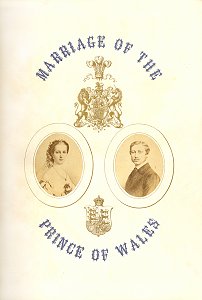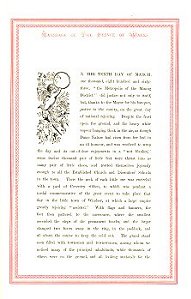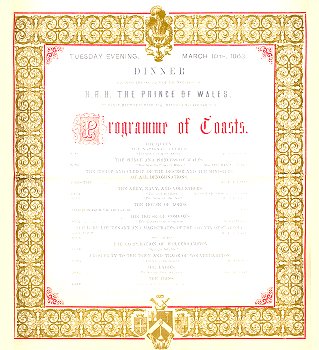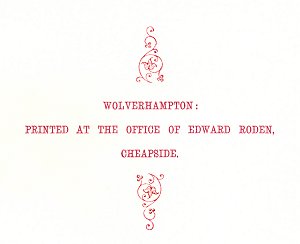Lawley writes: "The art of printing in our town is indebted largely to Mr. Edward Roden for the artistic improvements he bestowed upon it. He was born in King Street, Wolverhampton, in the year 1822, and served an apprenticeship to Mr. Joseph Bridgen (then carrying on business in Darlington Street). "In 1846 Mr. Roden entered the employment of Mr. Vizitelly, the eminent art printers of Fleet Street, London, where he remained for two years. His health failing he returned to Wolverhampton where he commenced business on his own account. "At that time the printing trade was rather at a low ebb. Coloured printing was almost unknown until Mr. Bridgen tried and succeeded in introducing a little display, with the use of colours and bronze. Mr. Roden was not satisfied with the state of the art and resolutely set himself to improve it. He obtained the most artistic founts, he freely used different coloured inks, initial blocks and decorations, so that he soon began to feel the effect of his enterprise in the support he obtained.
"He secured the corporation printing for a period of three years, and gave such satisfaction that the obtained the contract for a further term of four years, a result which caused no little trade jealousy. The monopoly however did good, for it lead to general improvement in the trade and now, on account of the general excellence or workmanship, the Corporation contracts have not been confined to one firm.
"Mr. Roden invented and patented an apparatus for printing in various colours called "The Rainbow Printing Apparatus", of which a large number were sold to the best printing firms in the United Kingdom. He also invented a machine called "The Imperial Plough Cutting Machine" for cutting the edges of paper, the model f which he sold to Messrs. Harrild, the eminent printers’ machinists, who sold over 800 to the trade."
"Mr. Roden, after a very successful career, retired from business in 1879, having sold the good will to Messrs. Steen and Blackett of Queen Square …". |
